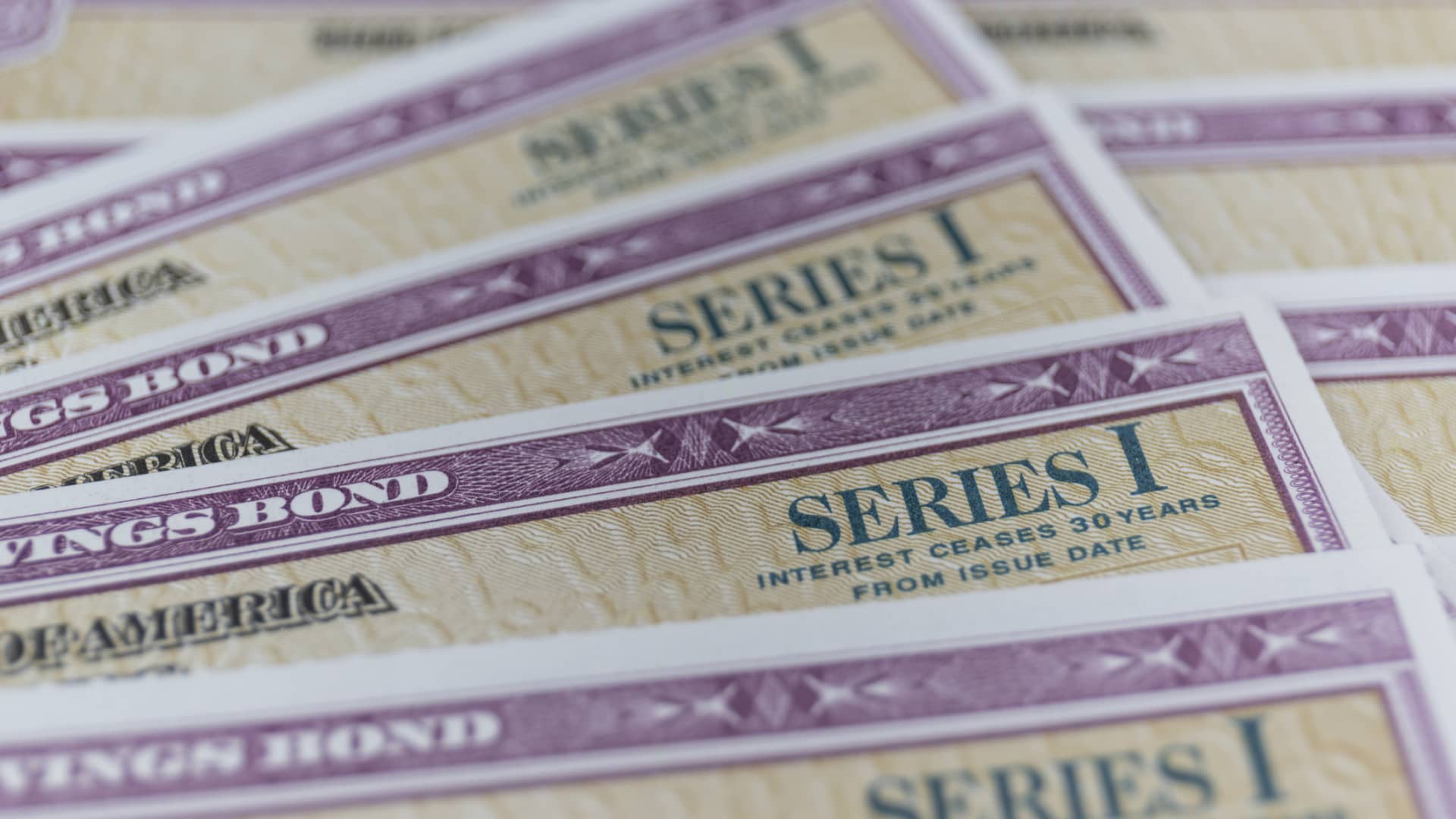Series I bonds will pay 4.3% annual interest through October, a drop from 6.89% in November amid falling inflation, the U.S. Department of the Treasury announced on Friday.
There are two parts to I bond interest rates: a fixed rate that stays the same after purchase, and a variable rate, which changes every six months based on inflation. Starting May 1, the new variable rate is 3.38% and the fixed rate is 0.9%.
While experts predicted the 3.38% variable rate, the fixed rate, which jumped to 0.9% from 0.4% in November, “definitely makes it attractive for long-term investors,” said Ken Tumin, founder and editor of DepositAccounts.com.
More from Personal Finance:
Series I bond rates fall to 4.3% amid cooling inflation
As demand soars for I bonds, TreasuryDirect gets a makeover
When it makes sense to buy extra paper Series I bonds with your tax refund
The Treasury doesn’t disclose how it determines the fixed rate for I bonds every six months, but experts think factors like demand and the yield from Treasury inflation-protected securities may factor in.
The 0.9% fixed rate is the highest since November 2007, when I bonds offered 1.2%, Tumin said, noting the new rate was a “pleasant surprise.”
You can buy I bonds online through TreasuryDirect, limited to $10,000 per calendar year per investor. And it’s possible to buy an extra $5,000 in paper I bonds with your federal tax refund.
However, you can’t access the money for one year and you’ll lose the last three months of interest by redeeming within five years.
I bonds less attractive for the short-term
While I bonds may still appeal to longer-term investors, the 4.3% annual rate may be less attractive to those with shorter-term goals, experts say.
“I bonds were the only game in town for two years,” said Jeremy Keil, a certified financial planner at Keil Financial Partners in Milwaukee. “And now they’re just part of the mix.”
After a series of interest rate hikes from the Federal Reserve, options like certificates of deposit, Treasury bills, money market accounts and high-yield savings accounts have become relatively safe alternatives for shorter-term savings.
If you’re just trying to buy an interest rate for six months or a year or two, I bonds are not the way to go.Jeremy KeilFinancial advisor at Keil Financial Partners
As of May 1, the top 1% average of one-year certificates of deposit were paying 5.18%, according to DepositAccounts. Two- to six-month Treasury bill yields were also above 5% as of May 1.
Keil said I bonds are now more of a “strategy investment” for those who want to know how much they’re earn above inflation for the long run.
“If you’re just trying to buy an interest rate for six months or a year or two, I bonds are not the way to go,” he said. “It’s the CDs and the money markets, things like that.”
